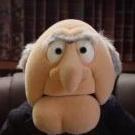M20J minimum hours to be insurable
-
Members Online
- Baker Avionics
- bigmo
- Ron McBride
- DCarlton
- mooniacX
- GeeBee
- tmo
- TheAv8r
- Chaseford10
- Mooney in Oz
- FlyingScot
- toto
- MatthiasArnold
- kortopates
- Lincoln
- 00-Negative
- Ronnie Pool
- RescueMunchkin
- Bob Weber
- ajudson
- prillayo03
- Fly Boomer
- Deb
- elias91
- aviatoreb
- 201Mooniac
- LP1
- exM20K
- AndreiC
- madjano
- Parker_Woodruff
- Ibra
- UteM20F
- M20S Driver
- 1980Mooney
- Hank
- M20F
- EricJ
- Rusty Pilot


Recommended Posts
Join the conversation
You can post now and register later. If you have an account, sign in now to post with your account.